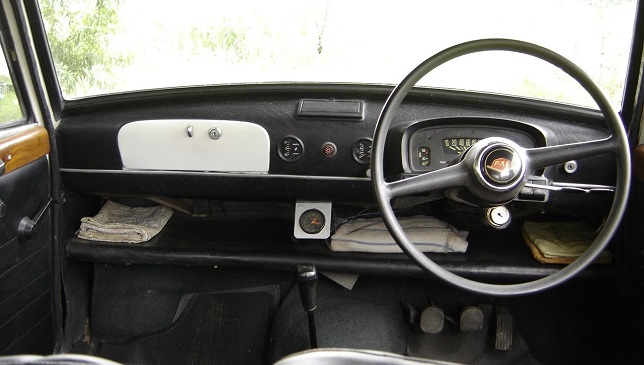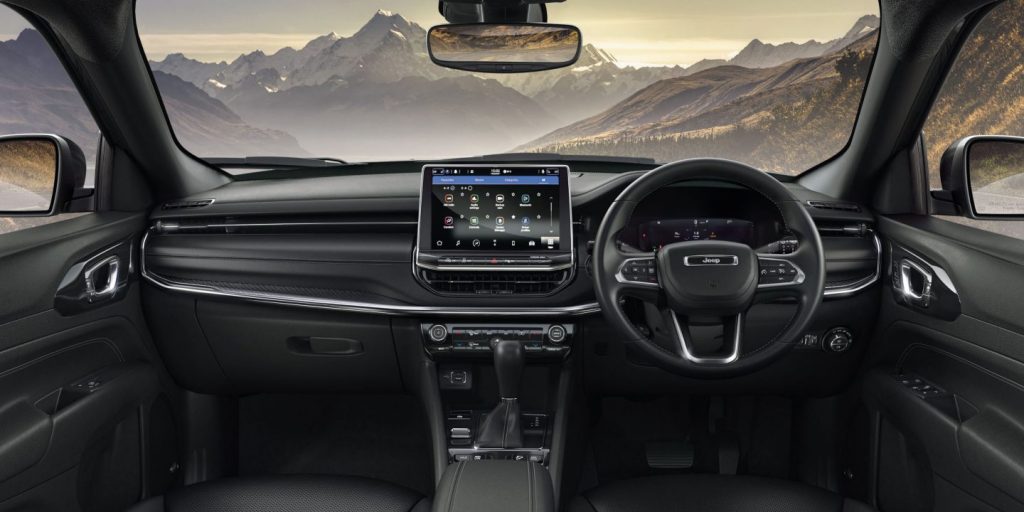The journey from 1980s Analog to 2025 Digital Life

The first entertainment – conversations!
Remember the first car you ever sat in, in India – What was the entertainment system in there? The iconic Fiat licensed Premier Padmini’s, HM Ambassadors, Maruti 800s & Gypsys of the world all had analog systems, without any in-built entertainment systems. The entertainment – was conversations!
Cassettes and CD, DVD revolution:
1990s saw the introduction and major penetration of the ‘single-din’ radio sets, as they were popularly known as, with cassette player functionality. A technology that ran for nearly more than a decade, with all the popularity and craze for cassette collection. This soon was stormed over by CDs & DVD players in the 2000s. 2010s is when these radio sets got two major individual adds on – ‘double-din’ and Bluetooth compatibility to pair smartphones. This went on for almost around another decade plus, until mid-2010s in the large volume brands in India.
Digital age – the beginning:
Digital innovation and technology in vehicles have always been a late entrant (to put it polity), due to various issues in its own. What is interesting is to see the accelerating pace it is evolving lately. While there’s no question of comparison with the smartphone tech, but it still has gained good pace in the last years and auto manufacturers.
The digital screen-based telematics offering started primarily by adding a screen to the Bluetooth calling and streaming functions. Additional functions were pretty much restricted around providing the vehicle information and manuals. This has been evolving now with more focus on the entertainment category.
2015 saw the luxury vehicle entertainment innovations dominating the automotive market, characterized by customization and interactivity. Standard driver engagement concepts were further enhanced by focusing on the high-end sound systems bringing in the luxury quotient of vehicle ownership. However, the luxury industry innovations have a time cycle of 3-5 years, in general, before they are absorbed on a mass scale by the volume based automotive brands.
Fast forwarding further to touch screens evolution of cars – post luxury cars getting into the race of screen sizes, where every inch matter, for volume brands this started in the 2010s primarily as an aftermarket accessory and soon found its way into the ex-factory main-stream route towards the end of decade, starting around 2018-19.
Indian launch of the most awaited and talked about tech in cars – Connectivity:
It was early April 2019 when MG was the first one to announce the introduction of connected cars with an AI virtual voice assistant bot – Hello MG. The whole launch announcement was very aptly targeted by their Product & Marketing teams as ‘the internet car’, enabling the brand positioning as new age high tech cars. This captured the national auto industry media interest. Soon was the announcement by a heavy-weight industry player Hyundai Motors India. While the industry announcements were happening over the months, from the luxury space, Mercedes-Benz India was the first to introduce an entire eco-system backed, TCU based connected cars on 1st October 2019. Since then, there is no turning back. Suzuki and a lot of other brands joined the Connected cars game offering a variety of features.
Once introduced, important question that comes up is – are customers really using it?
When any new technology is launched, it takes a substantial time for the penetration of technology in customer’s everyday lives. The acceptance of new tech, usefulness and benefits first need to sync up into the dealer network, sales, and after-sales consultants with a lot of educational training and practical hands-on experience. Once the sales army is convinced about the new tech and equipped with the knowledge, it is only then that the successful communication will happen to the end customer and the usage increases at a rapid pace. This is underrated but the most important ingredient to create the connected car success story.
The world today – 2022:
The infotainment systems are refined in some of the new age popular cars. When I say refinement, I mean high screen resolutions backed with good hardware, smooth functioning software, no lags, etc. Software updates to improvise functionality and bug fixing has also started, however, with limited frequency. Connectivity in India has slowly grown into majority of the brands after 2019-20. In-car voice assistants is the next big thing which only a few players have mastered today with quick fast response and multiple use-cases; rest are catching up in the game.

While companies have been putting in a lot of efforts on the communication, I still feel connected car feature usage is still more fad-driven, a cool tech show-off factor that lasts for first three to five months of new vehicle ownership. The regular users of connectivity features are still the ‘early tech adopters’ category of customers, amongst the majority customer base. This is true like any new technology that gets introduced – the first few years is primarily driven by the excitement, then slowly it finds its place in everyday, mainstream usage and becomes a must have. For connected cars tech, we are enroute.
The education focused customer communication is where the auto industry focus lies today, which will help create the utility driven usage for most customers, building the habit to use connectivity daily. This is slowly changing and will eventually bring in the subscription revenues for OEMs post the usually three-year free-of-cost connected car services. It won’t be far that customers get habituated to the tech as everyday need and find higher utility.
While we all have been speaking and reading about implementation of Internet of Things (IoTs), connected cities, this penetration has been slow, especially in a diverse market like India.
Thanks to Tesla to act as a catalyst in this space, what we see as an offering today in vehicle infotainment system is just the tip of the iceberg of the future offering. The auto industry has been heavily focusing upon, investing time and efforts to revolutionize the entertainment space to the next level. An innovation faster and beyond smartphone mobile technology is the new race that we are going to benefit from.
Transition from ‘just Connected cars’ tech to the new concept of Digital Life:
We spend a considerable amount of time in our cars, daily. This makes our cars the next private space after home & office. Beyond a car’s performance, space and luxury quotient – lies a plethora of tech-based ideas that can be offered. The market needs to move from offering only basic vehicle information and ‘remote operations-based services’ (like remote door lock-unlock, windows & sunroof open-close functionalities) to a new elevating experience.
When our customers ‘live’ in cars for few hours daily on average, the customer journey must be elevated to something the customer hasn’t imagined. This driving time is the customers’ space, where she/he has a substantial time to think, ponder, get entertained and rejuvenate. It is meant to be magnanimous just the way her/his life is – a celebration! Comfort, convenience, and new tech that shall keep your vehicle new forever, providing software enhancements and features that will keep users engaged and happy.
The Digital Life enrichments can be built on various avenues, some listed ahead, as a start –
- Voice and virtual assistants: Moving away from the standard android-based Google assistant which has limited use-cases inside vehicle, a lot of OEMs are working with Tier1 giants to bring in enhanced and efficient assistants that can offer on-board and off-board functionalities.
In future, it is likely that it won’t be restricted to your car only but will also be with you on your smartphone OEM app, giving you a seamless experience even when you are outside your vehicle. IoT based home automation has already started for cars and is just going to increase further with better market penetration. With AI continuously learning on the go, the new voice assistants are soon to be the game changers. It is only a matter of short time, that these in-car voice assistants truly grow into full capacity of acting as ‘personal assistants’ with interactive voice, taking care of your mundane driving chores, offering unique personalization with calendar linked meetings, music and mood preferences.
- Entertainment: The in-car entertainment quotient is only going up from today’s music integration to having a plethora of in-built applications like Spotify, Apple music, Amazon music and the likes with in-car internet connectivity. Like the way OTT penetrated in our mobile phones within a span of last 3+ years, OTT penetration inside vehicles is happening faster than we think. Although governed and restricted from a driving safety perspective in the front screens, the in-car data packs and Rear Seat Entertainment Systems are the future of entertainment, which will see a higher penetration in the coming time.
With the soon to be introduced 5G tech, cloud-based security and firmware updates will happen quietly and efficiently in the cars. The 5G network speed will make the voice interactions super smooth with quick error free voice engine processing and responses, enabling a humane touch. The ultra-smooth high-definition music and video streaming experience will become addictive hygiene factor in cars and a boon while doing long distance journeys with families!
With the excellent telecom infrastructure across geographies of India and good telematics hardware offerings by OEMs, more feature loading is going to happen soon, enriching cars. These ideas will extend the customer’s digital lifestyle from home to cars and will find its way in our everyday lives in the next 3 years – 2025.
This article was written by the author while on a trek, in a remote village called Kalga, in Parvati Valley, Himachal Pradesh.
Author:

Sameer Sharma
Product Head – Digital Life (IAP region)
SWX, Stellantis
A Product Management professional with a decade of luxury automobile experience. With keen interest in understanding consumer psyche and new technology that can enrich driving experience, Sameer comes as a strong Product leader. Backed with a lot of research, he laid the foundation, Indianized and launched the Mercedes me connected cars in India in 2019. He currently heads the Digital Life innovation product portfolio for SWX, Stellantis, to re-imagine the future of software experience in vehicles – for India, Asia and Pacific region.
Published in Telematics Wire



